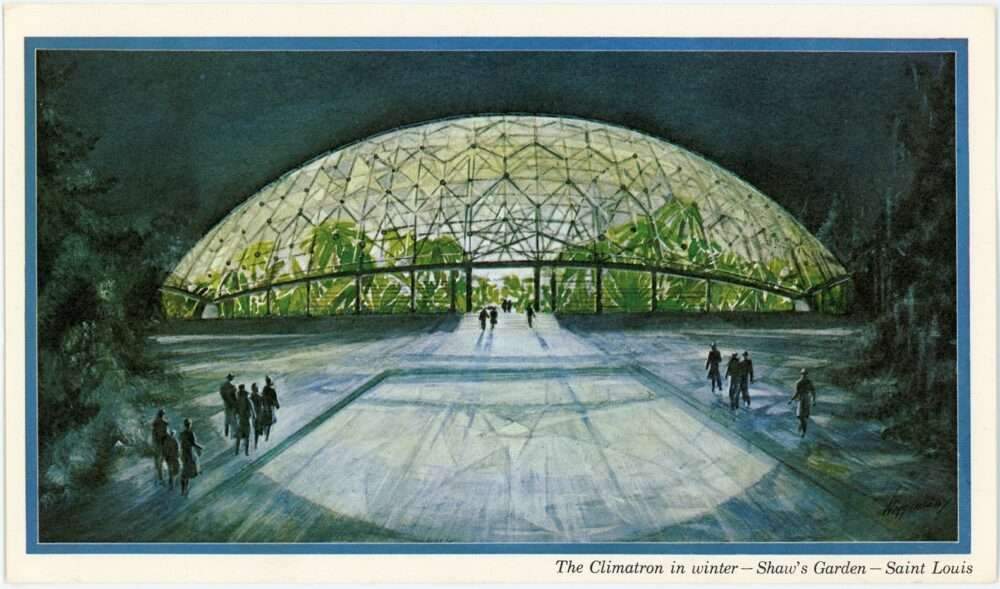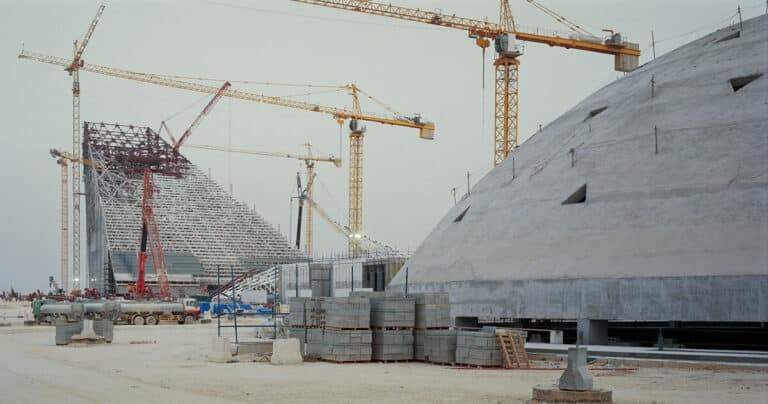Uncovering the rise of the environmental movement through the lens of architectural practice and thought
For more architectural news

For more architectural news
Arab Architecture – Architectural Publishing Team
Arab Architecture is ArchUp’s dedicated editorial team focused on publishing high-quality content about contemporary architecture, urban design, and regional architectural developments. The team curates and reports on significant projects, design concepts, and influential movements shaping the architectural landscape in the Arab world and beyond.
Explore their latest architectural coverage here: ArchUp Architecture Section

A Cultural Ecosystem in the Desert:-The RAC’s masterplan disperses its program across pavilions, theaters, and academies, each serving a unique purpose:Desert-Responsive Architecture:-Bofill’s team harmonizes the complex with Riyadh’s harsh climate through:Urban Integration and Accessibilit:-The RAC sits at the western edge…

External cladding works at Ebdaat Towers 6 and 7 on King Fahd Road in Al-Sahafa District are witnessing remarkable progress, as the project approaches completion.The two towers feature a modern and functional design, and are built on a total area…
Disclaimer | This article may contain affiliate links, this means that at no cost to you, we may receive a small commission for qualifying purchases. When it comes to furniture, Walmart has something for every need and budget! You don’t…

W A T E R T O W E Rw i s d o m i s a p e t r i f i e d e x p e r i e n c efeatured ashesteen+ \ + /// +P H O T O S B Y L I L – D…
There is something irresistible about the ugly duckling, even before its grand metamorphosis into (spoiler alert) an adult swan. He’s gangly, his feathers look weird, his proportions are off, and every other animal he encounters on his journey notices this…
Browse the Architizer Jobs Board and apply for architecture and design positions at some of the world’s best firms. Click here to sign up for our Jobs Newsletter. Brick has been a construction staple in many parts of the world…

A Cultural Ecosystem in the Desert:-The RAC’s masterplan disperses its program across pavilions, theaters, and academies, each serving a unique purpose:Desert-Responsive Architecture:-Bofill’s team harmonizes the complex with Riyadh’s harsh climate through:Urban Integration and Accessibilit:-The RAC sits at the western edge…

External cladding works at Ebdaat Towers 6 and 7 on King Fahd Road in Al-Sahafa District are witnessing remarkable progress, as the project approaches completion.The two towers feature a modern and functional design, and are built on a total area…
Disclaimer | This article may contain affiliate links, this means that at no cost to you, we may receive a small commission for qualifying purchases. When it comes to furniture, Walmart has something for every need and budget! You don’t…

W A T E R T O W E Rw i s d o m i s a p e t r i f i e d e x p e r i e n c efeatured ashesteen+ \ + /// +P H O T O S B Y L I L – D…
There is something irresistible about the ugly duckling, even before its grand metamorphosis into (spoiler alert) an adult swan. He’s gangly, his feathers look weird, his proportions are off, and every other animal he encounters on his journey notices this…
Browse the Architizer Jobs Board and apply for architecture and design positions at some of the world’s best firms. Click here to sign up for our Jobs Newsletter. Brick has been a construction staple in many parts of the world…

A Cultural Ecosystem in the Desert:-The RAC’s masterplan disperses its program across pavilions, theaters, and academies, each serving a unique purpose:Desert-Responsive Architecture:-Bofill’s team harmonizes the complex with Riyadh’s harsh climate through:Urban Integration and Accessibilit:-The RAC sits at the western edge…

External cladding works at Ebdaat Towers 6 and 7 on King Fahd Road in Al-Sahafa District are witnessing remarkable progress, as the project approaches completion.The two towers feature a modern and functional design, and are built on a total area…
Disclaimer | This article may contain affiliate links, this means that at no cost to you, we may receive a small commission for qualifying purchases. When it comes to furniture, Walmart has something for every need and budget! You don’t…

W A T E R T O W E Rw i s d o m i s a p e t r i f i e d e x p e r i e n c efeatured ashesteen+ \ + /// +P H O T O S B Y L I L – D…
There is something irresistible about the ugly duckling, even before its grand metamorphosis into (spoiler alert) an adult swan. He’s gangly, his feathers look weird, his proportions are off, and every other animal he encounters on his journey notices this…
Browse the Architizer Jobs Board and apply for architecture and design positions at some of the world’s best firms. Click here to sign up for our Jobs Newsletter. Brick has been a construction staple in many parts of the world…